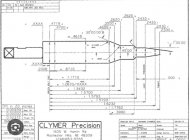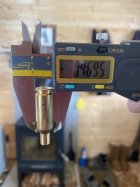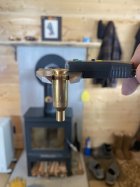Dimner
I do believe in Captain Crunch.
I have been trying to research this, but I cannot find any conclusion I'm satisfied with. So just down the the nitty gritty.
I have noticed, that when I fireform virgin brass. the first firing I get close to or on the max shoulder. Let's say I get 2.032 on my first firing. and my 2nd firing I get to my max of 2.0345". I verify this is my max via the method of rechambering this brass with a stripped bolt. Then I work with my FL sizing die to bump back the shoulder to the point where the bolt easily closes. Let's call this 2.032".
Now, while I work on load tuning. I keep 2.032" in my notes as where I want to bump shoulders back. However, on the next round of firing, the shoulder doesn't go back to the max of 2.0345". And like a dummy, I do not notice the shoulder has not moved. I clean my brass, and I resize with the die locked into the previous settings. Afterwards, I'm expecting a shoulder of 2.032, but I'm really somewhere at 2.030". Then I shoot these, and this shoulder still doesn't go back to max. It now stays at 2.030"
Yes my loads are at 95% of max pressure and yes I anneal each time I prep brass.
What is going on here? Why doesn't the shoulder go back to max when I shoot the next round of loads?
I have noticed, that when I fireform virgin brass. the first firing I get close to or on the max shoulder. Let's say I get 2.032 on my first firing. and my 2nd firing I get to my max of 2.0345". I verify this is my max via the method of rechambering this brass with a stripped bolt. Then I work with my FL sizing die to bump back the shoulder to the point where the bolt easily closes. Let's call this 2.032".
Now, while I work on load tuning. I keep 2.032" in my notes as where I want to bump shoulders back. However, on the next round of firing, the shoulder doesn't go back to the max of 2.0345". And like a dummy, I do not notice the shoulder has not moved. I clean my brass, and I resize with the die locked into the previous settings. Afterwards, I'm expecting a shoulder of 2.032, but I'm really somewhere at 2.030". Then I shoot these, and this shoulder still doesn't go back to max. It now stays at 2.030"
Yes my loads are at 95% of max pressure and yes I anneal each time I prep brass.
What is going on here? Why doesn't the shoulder go back to max when I shoot the next round of loads?













